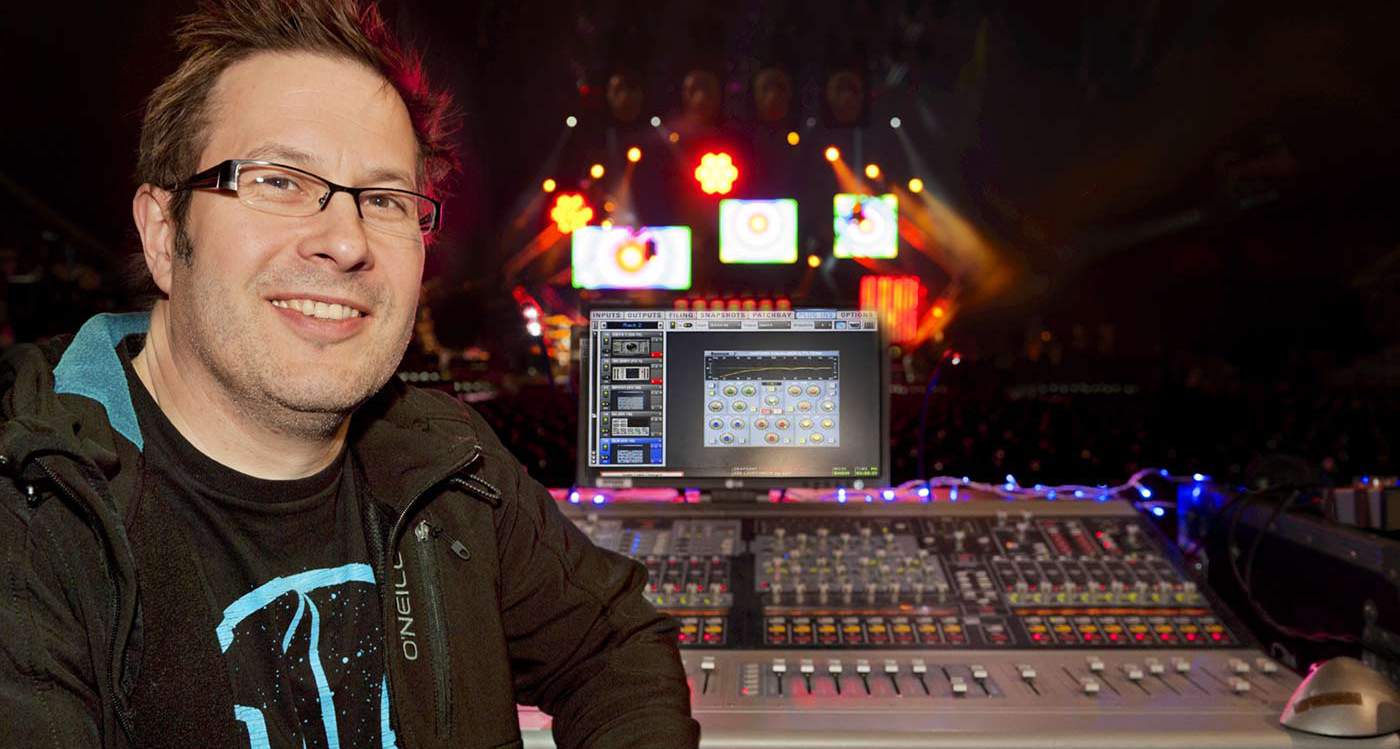Karl ‘Snake’ Newton: Mastering Live Sound with Sonnox Plug-ins
Karl ‘Snake’ Newton, a seasoned FOH engineer with years of experience in both live and studio settings, has built an impressive career working with top-tier artists like Robbie Williams, Pet Shop Boys, Craig David, and Duran Duran. His journey began with a DIY approach to sound engineering, driven by his passion for making bands sound exceptional. We caught up with him at his home studio in London, where he shared insights into his latest tour with Duran Duran, his transition to digital consoles, and his extensive use of Sonnox Oxford plug-ins.

From Musician to Sound Engineer
Karl’s career began in the late 80s as a budding musician with a hands-on approach to sound. “I built a PA with no idea that people rented these things out at the time,” he recalls. His initial focus was on making his band sound great, and despite the band’s lackluster songs, the quality of his sound caught the attention of others. This led him to start renting out his PA system, which marked the beginning of his sound engineering career.
Starting off live, Karl’s hybrid skills quickly became apparent as he moved to London and started gaining freelance clients. His big break came as an emergency replacement for Paul Rodgers. "I didn’t know who he was at first, but I recognized all the songs on the setlist," Karl remembers. This opportunity, along with his work with Divine Comedy on tour with Robbie Williams, opened doors to work with other major artists like Pet Shop Boys.
Mixing for Duran Duran and Beyond
Karl’s most recent project involved mixing FOH for Duran Duran on their All You Need Is Now tour. “It’s really a great album, probably the best one they've done since Rio,” Karl says. Produced by Mark Ronson, the album translated well to live performances, showcasing the band’s true essence.
In addition to mixing their live shows, Karl worked on several DVD projects for Duran Duran, including a unique collaboration with David Lynch. "It was David Lynch’s visuals all over a gig for an American Express webcast in LA," Karl explains. "It’s actually quite interesting." Alongside this, Karl is also mixing a straight-on performance DVD recorded at Manchester Arena.
Transitioning to Digital Consoles
Karl was an early adopter of digital consoles, beginning with the Langley Recall and its unique built-in automation. "I got into automation back when the Langley was the only desk with it," he says. The jump to digital was a natural progression for Karl, who had been working with SSL and Euphonix consoles in the studio. He later transitioned to the Yamaha PM1D, using a G5 Mac and MOTU 2408 units to enable virtual soundchecks—a concept that was ahead of its time in the early 2000s.
By 2007, Karl began using the Digidesign Profile console, benefiting from its compatibility with his existing plugin collection. "I’d always been a native mixer on Cubase, so the transition was no problem," he notes. This setup became integral to his workflow, especially as his use of Sonnox plugins grew.
Embracing Sonnox Plug-ins
Karl’s journey with Sonnox began around three years ago while working on a Robbie Williams album. He quickly became a fan of the Sonnox Oxford EQ, praising its precision and versatility. “The EQ is just the best for being able to do pretty much anything. It just sounds fabulous,” Karl enthuses. The Oxford EQ’s variable slopes and different EQ Types make it an essential tool for Karl, especially for live sound. "If something is a bit brash, it’s great to put it in Type 4 and just take out 1dB at 2 or 3 kHz. It doesn’t sound like you’ve dug anything out of the sound; it just becomes less brash."
The EQ is just the best for being able to do pretty much anything. It just sounds fabulousKarl on Oxford EQ
Karl also uses the Oxford Transient Modulator extensively, particularly on snare drums and bass. "It helps to get some of the front end sharpened up," he says. The Sonnox Dynamics and Limiter are also staples in his setup, providing control and punch. Karl appreciates the Limiter’s versatility, especially when used creatively. “If it’s a big rhythmic track, I’ll often put two of them in. One in Auto Gain and then tag another on with a few more dB jacked into it with the Auto Gain turned off. If you want that driving thing, it can really work.”
Creating Space with Oxford Reverb
Karl’s approach to reverb is dynamic, using multiple instances of the Oxford Reverb during live shows. He particularly values the Dry Space setting for percussion and short, sharp sounds, as it adds width and creates a defined space for each element on stage. "You want to close mic everything as much as you can onstage, so using the ambient space really helps," Karl explains. The Oxford Reverb is also a mainstay in his studio work, where he has fewer constraints on plugin slots.
A Forward-Thinking Approach
Karl Newton’s embrace of digital consoles and Sonnox plug-ins reflects his forward-thinking approach to sound engineering. By integrating cutting-edge tools into his workflow, he continues to elevate live performances and recordings for some of the biggest names in the industry. As Karl puts it, “They are really all over everything I do.” Whether mixing for a live tour or in the studio, Sonnox plug-ins have become an indispensable part of his toolkit, enabling him to craft the perfect sound for every project.
